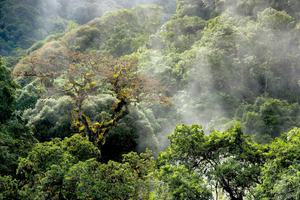Monsoon rains near Tuba City, Arizona. Al_HikesAZ/Flickr
Monsoon rains in the U.S. Southwest have increased in intensity by as much as 11 percent since the 1970s, meaning more rain is falling in less time, according to research by the U.S. Department of Agriculture. The number of these rainstorms has also increased 15 percent in the last half-century.
The scientists say the uptick is very likely due to global warming, noting that temperatures in the region have risen an average 0.4 degrees Fahrenheit per decade since the 1960s. While these climate change-charged storms contain more precipitation, they don’t seem to cover a larger area. The research was published recently in the journal Geophysical Research Letters.
“It is crucial that we track changes in individual rain storm intensities, especially in regions like the Southwest, where high-intensity, short duration storms are responsible for the majority of the annual rain fall,” hydrologist Eleonora M. C. Demaria with the Agricultural Research Service and lead author of the new study, said in a statement. “Such changes can have important impacts on the [region’s] ecology and are more likely to cause problems such as flash floods.”
Monsoon rains, defined as sudden downpours that fall in less than one hour, have been responsible for several significant flooding events in the past few years in states including Arizona, Oklahoma, and Texas. Demaria and her colleagues said government agencies and developers must build more robust and resilient drainage infrastructure capable of handling more intense rainfalls if they hope to reduce the risk of flooding.



